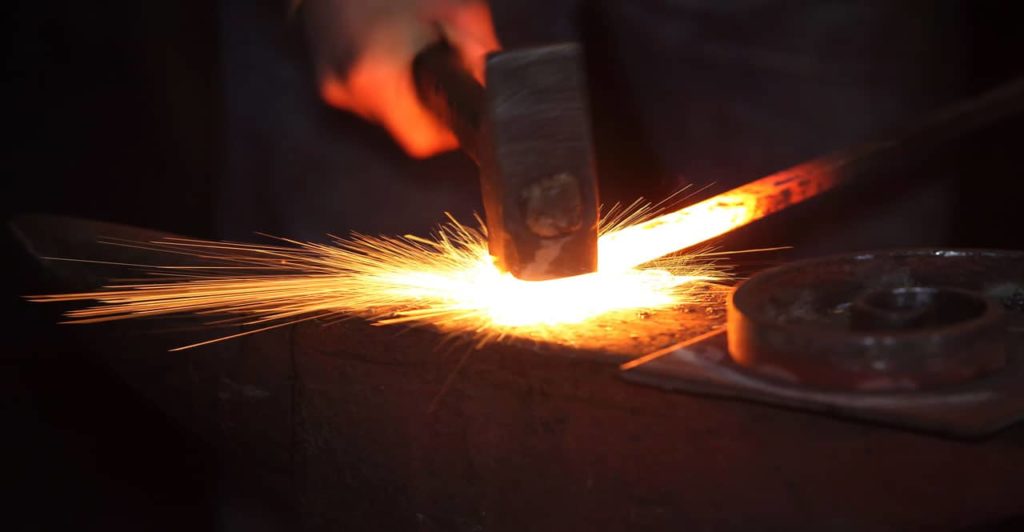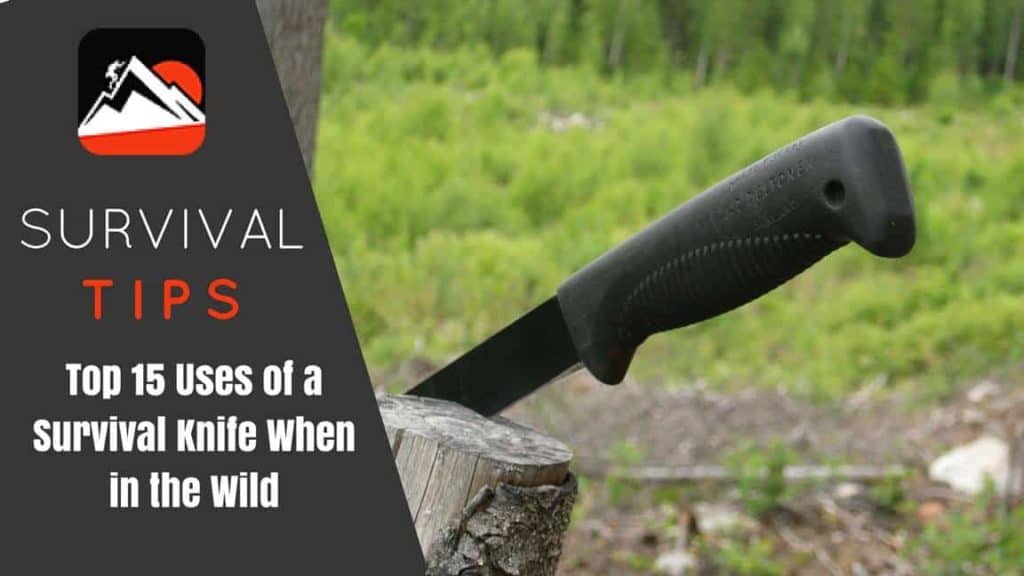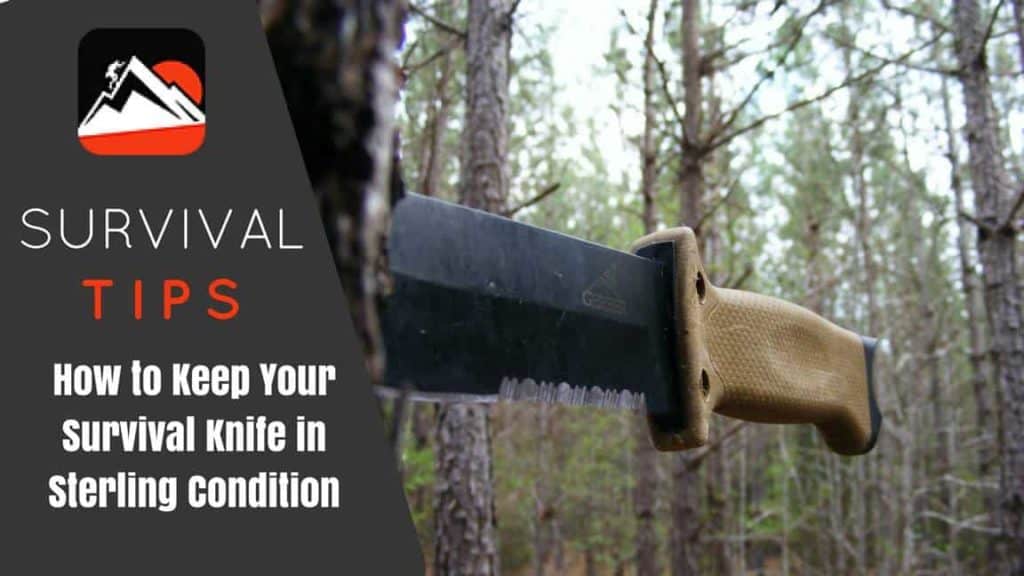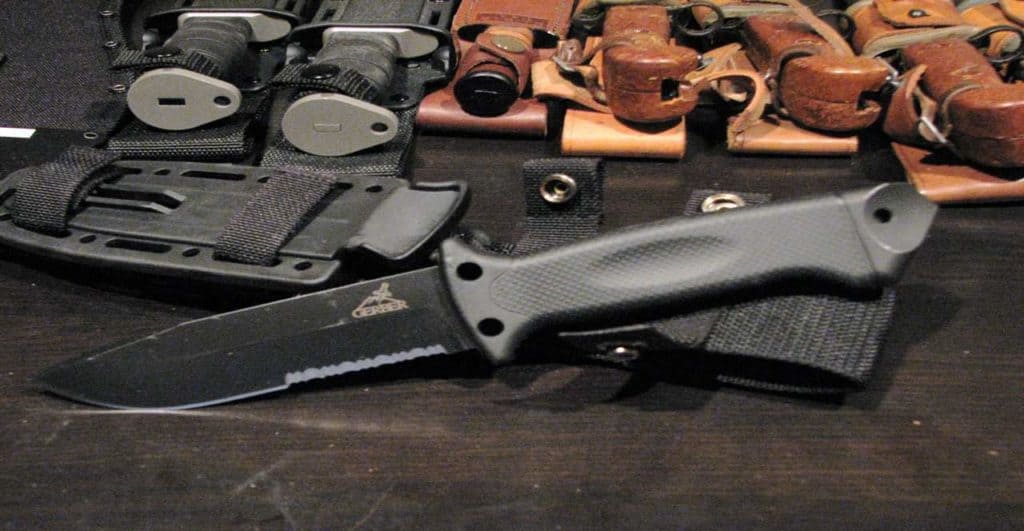Contents
When knives were first invented by the ancient man, they used to be made of stones. Rocks and stones were cut and polished until they got a pointed tip and a sharp edge.
Later when metal was discovered knives started to be made from iron and copper. But today knife blades are almost always made of steel. That’s because steel is lighter but stronger than most other metals.
From kitchen knives to tactical knives, steel is the most commonly used metal for the blades. The handle is usually made of another metal like aluminum or steel, wood, or polymer. Knives with a wood handle are not only more expensive but also more attractive.
Even though steel is the most common metal used for making knife blades, not many people know or understand the different varieties of steel. Steel is steel, right? Wrong. The steel used for making utensils it’s different from the steel used to make window frames.
Similarly, the steel used for making knife blades is different from the steel used for making safety pins and needles. Even the steel used for making knives has different types.
Some types of steel have good edge retention while some have excellent strength. Depending on the purpose of the knife, the proper type of steel is used.
Survival and tactical knife steel types should be chosen with care because these knives are put to more vigorous use than kitchen knives. The blade of a knife is the most important part. Therefore, the kind of steel being used makes all the difference.
WHY YOU SHOULD CARE ABOUT STEEL
Before we start discussing the types of tactical knife steel, it is important to know why you should care about the type of steel the knife is made from. Most people don’t and that’s because they don’t understand the difference between the various types of steel.
Alongside the design, symmetry, and construction of the knife, the type of steel used is significantly important. For instance, if you buy a knife with very low-quality steel you can expect the knife to break into two while chopping kindling or cutting fruit.
Not only is it a waste of money but also a lot of trouble if that’s the only knife you have. The knife handle is also notorious for breaking off sometimes but handles can be replaced while blades cannot.
Steel is derived from iron. But in order to make steel suitable for use in a variety of industries, it is mixed with other elements. Steel has been around since the dawn of civilization when iron started to be used by man.
But it has been used excessively for industrial purposes since the 19th century when the first railroads started to be made. Steel even without being mixed with other elements is durable and strong, while also being lighter than iron, aluminum, and several other metals.
This combination of durability, high tensile strength, and lightness has made steel more widely used than any other metal.
For manufacturing knives, the steel has to be prepared by mixing in other elements like carbon, chromium, nickel etc. We are all familiar with stainless steel. Is steel naturally stainless? No.
Steel derived from iron is not stainless at all. Just like iron, it is as prone to rust and corrosion. Steel is made stainless by mixing in a high proportion of chromium into it. Natural steel doesn’t have any of the characteristics found in a steel knife. These include hardness, sharpness, and corrosion resistance.
Steel has to be mixed with other elements to give it these characteristics. Therefore, the steel is the main component of the knife. Without quality steel, there is not much point to a knife.
So what are the different features of steel that need to be kept in mind when choosing a knife? Let’s find out.
IMPORTANT FACTORS WHEN CHOOSING KNIFE STEEL
When a knife is manufactured, the steel is created by mixing in various types of additive elements before being rolled and heated. Regardless of the type of steel used in manufacturing pocket knives or tactical knives, they should have some or all of the following properties:

Hardness: The simplest example of hardness is glass. It’s one of the hardest materials ever found. No matter what it is poked with, there will be no dent. This scale of measurement is also used for steel.
A pointed object, like a diamond cut glass, is pressed into the steel with force to check if it leaves any imprint. This is called Rockwell hardness, and is measured in HRC (Hardness Rockwell C). Different types of steel have different HRC rating. The Rockwell scale is used by metallurgists to measure how hard a type of steel is.
The higher the rating, the harder the steel. Steel hardness is of particular importance to knife manufacturers because a harder steel is better at holding an edge, as compared to a softer steel.
However, hardness is not always the best. If the steel is too hard, it can crack or break just like concrete. For instance, a steel with an HRC rating of 58-62 will be better at holding an edge better but it will also be less durable and more prone to breaking and cracking. Knife steel with a high hardness often requires a lot of care so that the edge isn’t damaged.
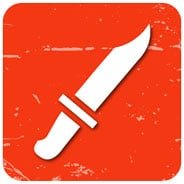
Toughness: The durability of steel is also called toughness. The tougher the steel, the more abuse it can withstand without breaking. Softer steel is tougher than hard steel, because it’s resistant to chipping and breaking.
On the flip side, the tougher the steel, the less edge retention it will have. A knife steel that has a high toughness will have a thin cutting edge, and will also be extremely resistant to chipping and breaking. Softer and more durable steel is also easier to sharpen.
You could be wondering if it’s possible to make a steel both hard and tough. Unfortunately, no. If you make the steel harder, you reduce its durability, and if you make the steel tougher, you reduce its hardness.
This means, if you have an incredibly hard knife, you can shatter it if you drop it on a hard surface. But if you have a tough knife, it will not break but will need to be sharpened before every use.

Wear resistance: The harder the knife, the more difficult it is to sharpen it (because it can chip and crack). That is why hard steel usually has a higher wear resistance and longer edge retention.
Wear resistance means how long the edge takes to wear out. However, many soft steel types can also have high wear resistance. It all depends on the number of carbides mixed in the steel. Wear refers to damage from both abrasion and adhesion.
Abrasive wear refers to the damage that occurs when harder particles wear out a softer surface, and adhesive wear occurs when debris dislodges from one surface and attaches to another.

Corrosion resistance: Stainless steel is best known for being corrosion resistant. Steel is made resistant against rust and stains by adding a substantial amount of chromium to it. Corrosion resistant steel is better able to resist chemical or elemental damage like rust, which is caused when steel is exposed to water, salt, chemicals, or humidity for a prolonged period.
Both kitchen and tactical knives are widely made from stainless steel, because people prefer if the knives didn’t rust or stain. Because knives are put to a variety of uses and abuses, stainless steel remains shiny and stain-free for the longest time.
However, it must be kept in mind that even stainless steel isn’t stain-proof; it can only resist stains and rust up to a certain time, but if the conditions are right, stainless steel can also corrode.

Ductility: Steel has high tensile strength, which means it doesn’t break apart even when the two ends are stretched in opposite directions. For example, in the game of tug-of-war, high tensile strength is applied to the rope. Ductility, therefore, refers to the ability of a metal to be stretched into a thin wire.
Copper has the highest ductility (the reason why it has always been used for wires), while platinum comes a close second. Steel is generally not ductile, but by adding other elements to it, steel can be made ductile. For instance, a high amount of carbon decreases ductility and makes steel brittle.

Heat treatment: Like every metal, steel is also found in a molten state. It has to be heat treated for hardening. Knives need to be hard enough to withstand abrasion and hold a sharp edge, but also be flexible enough to withstand force without breaking.
Heat treatment is a process of different stages. First, the steel to treated to heat between 1,050 and 1,090° Celsius (1922 and 1994° Fahrenheit) and then cooled quickly. That is about as hot as it takes to destroy a Terminator if you saw the end of Terminator 2 (too bad they destroyed that series but that is another topic). Jason Bourne and Transformers though – every one of those movies is awesome.
This makes the steel hard but also brittle. In order to reduce the brittleness and also add sharpness, the steel is by heating it to 175–350° Celsius (347–662° Fahrenheit) for one or two hours.
The result is steel with a hardness of 53–63 HRC and also good grind, sharpness, and toughness. There should be a balance between heating and tempering because heating makes steel hard while tempering makes it tougher and reduces the brittleness.
For example, a camping or pocket knife is usually tempered at 350° Celsius (662° Fahrenheit) for better ability to withstand abuse without breaking. But a kitchen knife is generally tempered at 175° Celsius (347° Fahrenheit) for hardness as well as edge retention.

Blade geometry: What is blade geometry? In knifemaking, geometry is the design, shape, and grind of the blade. Pocket knives come in a variety of designs and shapes with a number of different locking mechanisms.
Some blades are curved, some are more pointed than the others, while some don’t really have a distinct point.
The blade geometry is related to the function of the knife. Does it have any connection with the knife steel? Indirectly, it does. Both the steel and the design should be suited to the purpose of the knife.
However, there is no one type of steel that is suited to a purpose a number of different kinds of steel can be used for the same knife. Blade geometry is more concerned with the knife’s ability to cut as well as withstand use and abuse.
Steel is more concerned with toughness, edge retention and ease of sharpening. For example, a machete will usually use an inexpensive carbon steel because it is tough with excellent edge retention. But a diving knife will use a steel low in carbon because of its high stain and corrosion resistance.
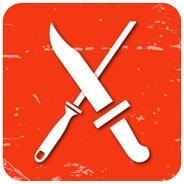
Sharpening/edge retention: To put it very simply, edge retention refers to the knife’s ability to remain sharp. We know that harder steel will have a higher edge retention while softer steel will need to be sharpened frequently. But there is no defined standard for sharpness or edge retention.
Edge retention is important for knives that work with abrasive materials like rope, cardboard, or carpet, while strength and toughness are important when chopping hardwood. Corrosive materials most significantly affect the edge. On the other hand, ease of sharpening is greater in finer-grained steels. Vanadium is added to steel to enhance grain.
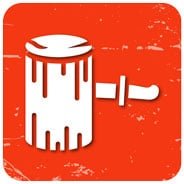
Purpose of the knife: The type of steel used ultimately comes down to the purpose of the knife. A diving knife should be made of stainless steel because it is used underwater, a pocket knife should have toughness because of rough conditions, and a skinning knife should have excellent sharpness.
A number of different steel types can be used for the same knife to achieve the desired functionality.
BLADE STEEL COMPOSITIONS OR ALLOYS
Now that we know of the different characteristics of steel, it’s time to see what elements are combined to achieve these features. Steel is usually an alloy of iron and mixed with carbon, but other elements are also added to achieve characteristics like edge retention, toughness, and corrosion resistance.
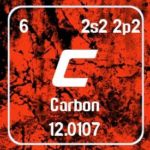
Carbon (C): Steel will always have carbon content in it. That’s because pure iron is too soft to be used for any purpose. Carbon is the element that hardens steel, gives it form and makes it useful for a variety of industrial purposes, including knife-making.
Carbon is one of the most abundant element and also inexpensive. Therefore, it is great for making an alloy with steel. However, while adding carbon does contribute to the steel’s hardness by breaking its crystal lattice, adding too much of it makes steel brittle and prone to breakage.
The higher the carbon content of the steel, the harder it is. But at the same time, it is also less tough than softer steel with a lower carbon content.
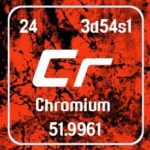
Chromium (Cr): Carbon steel is made stainless by adding chromium to it. Chromium is the most important element of stainless steel.
Iron oxidizes badly when exposed to high humidity, water, or acidic chemicals, all of which a knife will be subjected to on a daily basis. Chromium is added at 11 percent or higher to make steel stainless.
Curiously, chromium also has a high oxidation level. But it protects the steel by oxidizing first and forming a protective coating over the steel. Chromium also makes the steel harder to a certain extent, and improves its ability to withstand rough use and heat treatment.
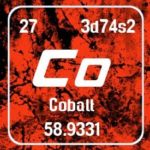
Cobalt (Co): Cobalt is mainly added to high-speed steel to retain their hot hardness. This means cobalt helps knives remain hard and undamaged even when exposed to high operating temperatures. Something like this is what Optimus Prime’s sword is made out of which enables him to cut up enemies easier – Lockdown knows all about that!
For instance, a drilling saw or other industrial tools made of steel will use high-speed steel because the cobalt makes it harder and helps it withstand high temperatures without losing its temper. Adding cobalt to steel also increases its edge retention.
Not many knife steels have cobalt because knives generally don’t perform under high operating temperatures, but the VG-10 is one of those superior knife steels that has cobalt added and is incredibly sharp and hard.
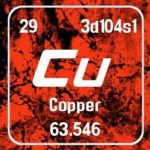
Copper (Cu): Copper has always been known for its high ductility and tensile strength, the reason why it’s widely used to make wires. When copper is added to steel, it increases the corrosion resistance and makes steel stainless.
That is why stainless steel almost always has copper in it. Copper also enhances strength if added in concentrations higher than 0.75 percent. Copper and iron are immiscible; they do not interact and have limited mutual solubility in any state.
Therefore, copper can be safely added to steel to increase corrosion resistance and strength without affecting the other properties of steel.
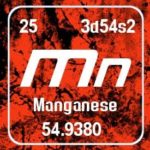
Manganese (Mn): Because steel is soft and molten when it’s pure, it needs to be subjected to heat to turn into a hardened state. All kinds of steel go through this heat treatment process. But when steel is subjected to heat in order to increase hardness it usually has to be done at a very fast rate.
On the downside, the faster this process is the weaker and more prone to defects the steel becomes. This is why manganese is added to the steel in order to make the heat treatment process more stable.
Manganese also protects the steel from getting defects during the process. When manganese is added to steel, the heat treatment process can be done at a slower rate without the risk of defects.
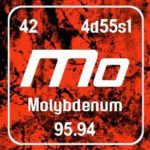
Molybdenum (Mo): Much like chromium, molybdenum also has a similar corrosion resistant effect on steel. Aside from that molybdenum also increases the hardness, toughness, and tensile strength of steel. Molybdenum is usually found in maraging steels, tool steels, and some stainless steels.
Like manganese, molybdenum also lowers the quench rate of the heat treatment process to make steel harder. Because molybdenum as corrosion resistant properties to steel it prevents chloride-induced corrosion and reduces the risk of pitting.
Molybdenum is not generally added to knife steel, but to industrial tool steels that are more exposed to corrosive chemicals.
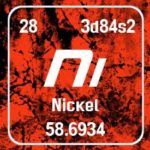
Nickel (Ni): Nickel is widely added to various types of stainless steel. Nickel is added to make austenitic steel, which is one of the most highly regarded forms of superior stainless steel. Austenitic steel is the largest among the globally used stainless steel and is used to make food processing equipment, medical equipment, and kitchen utensils.
Nickel is an austenite promoter and is thus widely used in stainless steel. Nickel is used together with chromium to create stainless steel. This combination is not only extremely corrosion resistant but also improves the toughness and strength of steel.

Phosphorus (P): Although phosphorus is added to steel to increase tensile strength and hardness, it isn’t widely used because it also makes the steel brittle. When phosphorous is added to quenched and tempered high carbon steels, the steel becomes hard but also turns brittle to a certain degree.
Phosphorous content in steel is never more than 0.05 percent to prevent brittleness. In steel sheets, phosphorus also prevents stickiness when used as an alloy. When added to low carbon steel, phosphorus adds strength to a certain degree, while also increasing corrosion resistance and machinability.
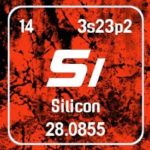
Silicon (Si): Silicon has properties similar to manganese when used as an alloy in steel. Silicon is a deoxidizer, preventing corrosion and rust in steel, and also improves resistance to high heat by lowering the quench and tempering rate. This prevents decay and damage during the heat treatment process.
Although not commonly used in blade steel, silicon is present in all other types of steel up to four percent, including electric sheets. If steel is used for welding, a silicon content is never greater than 0.10 percent, otherwise, the steel will crack.
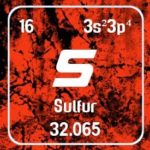
Sulfur (S): In most types of steel, sulfur is considered an impurity and the amount is very limited. Similar to phosphorous, sulfur also makes the steel brittle, while increasing tensile strength and improving machinability.
Handmade knives generally do not contain sulfur, but steel that is used for industrial tools may contain up to 0.040 percent of sulfur because it improves machinability.
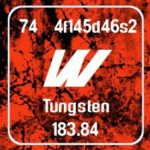
Tungsten (W): Tungsten has properties similar to molybdenum and is used in high-speed steel. To increase corrosion resistance properties of steel, a total 10 percent of tungsten and molybdenum is added for enhancing hardness and high-speed steel. It also makes sure that the steel remains undamaged when operating under high temperatures.
Like molybdenum, tungsten has corrosion resistant properties, but if being added to chromium steel, the amount is limited to six percent.
Saw blades, milling bits, drill bits, and other such tools that generate heat when being used at a high speed generally have tungsten and molybdenum added to prevent damage from operating friction and heat.
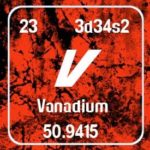
Vanadium (V): This is one of the most useful elements added to blade steel. Because vanadium is a brittle metal, it adds great hardness to steel and creates finer grains. Knife blades with a finer grain have very high strength, excellent toughness, and are also better able to withstand stress and roughness.
When added along with chromium to make chrome-vanadium steel, it makes steel with excellent edge retention that doesn’t become dull even after repeated use. Several high-end knives have blades made of CV steel, and they are regarded for their extreme durability and edge retention.
See also: Top 15 Uses of A Survival Knife When In The Wild
COMMON KNIFE STEEL TYPES
Although blade steel comes in various varieties, they can be classified into three broad types: tool steel, carbon steel, and stainless steel.
Tool steel: As the name suggests tool steel is mainly used for cutting tools, such as saw blades, drill bits, etc. Tool steel is capable of remaining and damaged even under high operating temperatures.
Tool steel is also called high-speed steel and is made by mixing iron with cobalt, tungsten and vanadium. It is one of the hardest types of steel. However, when heat-treated tool steel also becomes very brittle, and difficult to cut or weld.
Carbon steel: Steel with a high carbon content is used mainly for those tools that require roughness and durability. Although every steel needs to have carbon in it, carbon steel has the highest carbon content and is used to make survival knives and machetes.
Carbon steel is easy to sharpen and holds an edge for the longest time. However, it is not corrosion resistant and will stain and rust if exposed to the right conditions. This is because of the low chromium content in it.
Stainless steel: This is by far the most commonly known steel because of its wide use in various industries. Stainless steel has a high chromium content, which makes it highly resistant to stains and corrosion.
Stainless steel is used for making EDC knives, survival knives, kitchen knives and utensils. Stainless steel not only resists corrosion and damage from chemical elements but also holds an edge well. However, stainless steel isn’t very durable, and can break with prolonged use. For making stainless steel, at least 13 percent of chromium has to be present.
POPULAR STAINLESS STEEL TYPES FOR KNIVES
#1 12C27
| FACTORS | RATING |
|---|---|
| Price: | (5/5) |
| Ease of Sharpening: | (3/5) |
| Corrosion Resistance: : | (3/5) |
| Edge Retention: | (4/5) |
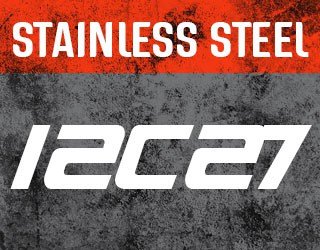
Swedish manufacturer Sandvik is a tooling and engineering company that is as popular for their knives and tools as for their steel. The 12C27 stainless steel is a high quality chromium alloy that’s used to make professional knives.
Once the chromium carbon alloy is heat treated it becomes highly resistant to corrosion and wear. Because of these properties 12C27 steel is used to make fishing and hunting knives, EDC and pocket knives, ice drills and skate blades. 12C27 is one of those steel types that have both hardness and toughness as well as razor sharpness and corrosion resistance.
#2 13C26
| FACTORS | RATING |
|---|---|
| Price: | (5/5) |
| Ease of Sharpening: | (4/5) |
| Corrosion Resistance: : | (3/5) |
| Edge Retention: | (3/5) |
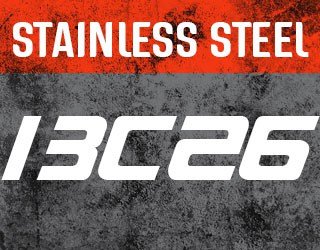
This is also by Sandvik, and a knife blade version of the AEB-L razor blade steel. The 13c26 has a high chromium carbon ratio which makes the Steel a lot harder than many other stainless steel types.
The corrosion resistant properties of the 13c26 are slightly lower than the 12c27 because the carbon content is higher than chromium. But in practical applications it does not make much of a difference and 13c26 remains one of the most popular Sandvik stainless steel.
#3 14C28N
| FACTORS | RATING |
|---|---|
| Price: | (4/5) |
| Ease of Sharpening: | (3/5) |
| Corrosion Resistance: : | (4/5) |
| Edge Retention: | (5/5) |
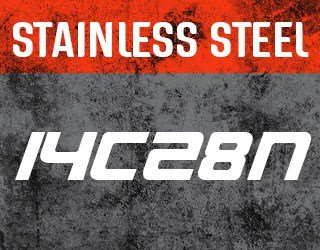
This is considered an improved version of the 13c26. This happened because several knife manufacturers asked Sandvik to make their 13c26 steel more corrosion resistant. As a result the Swedish company came up with the 14c28N steel.
The reason behind the higher corrosion resistance is a greater chromium content than carbon. However there is also a fair bit of Nitrogen in the alloy that promotes exceptional corrosion resistance. The 14c28N is extremely easy to sharpen and takes an edge extremely well.
#4 154CM
| FACTORS | RATING |
|---|---|
| Price: | (5/5) |
| Ease of Sharpening: | (2.5/5) |
| Corrosion Resistance: : | (3/5) |
| Edge Retention: | (3/5) |
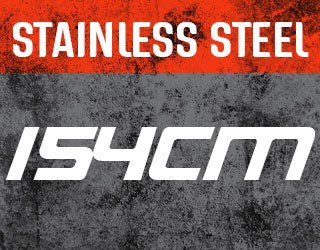
The stainless steel 154CM is manufactured by Crucible Industries. The great hardness of the steel is achieved by adding Molybdenum.
The 154CM also has superior edge retention and corrosion resistance, even though it has less chromium. The durability is good enough for most uses, and sharpening is also easy with the right tool. Several top manufacturers like Benchmade make knives with 154CM steel.
#5 420HC
| FACTORS | RATING |
|---|---|
| Price: | (2/5) |
| Ease of Sharpening: | (4.5/5) |
| Corrosion Resistance: : | (4/5) |
| Edge Retention: | (1.5/5) |
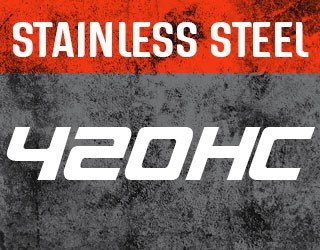
420 steels are usually high in carbon content but 420HC is the most superior of all. HC stands for High Carbon and this makes the steel harder than most others.
Even though this is a low-cost steel used mostly on budget knives, manufacturers like Buck make superior knives with this steel by heat treating it. 420HC has exceptional corrosion resistance and edge retention. Despite being one of the most affordable types of Steel 420HC has one of the highest corrosion resistance.
#6 440A
| FACTORS | RATING |
|---|---|
| Price: | (3/5) |
| Ease of Sharpening: | (4.5/5) |
| Corrosion Resistance: : | (2.5/5) |
| Edge Retention: | (1.5/5) |
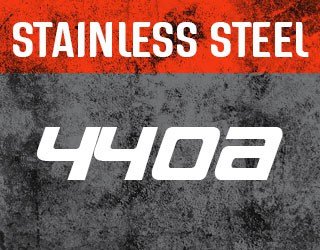
The 440A is considered a low-end steel, used by various companies to produce budget knives. 440A is a lot like the 420HC, in terms of hardness edge retention and durability.
The only difference is that the 440A has a higher level of carbon than chromium, which makes it hard but more prone to corrosion. Despite that, the 440A steel is widely used by several knife manufacturers because it is affordable.
#7 440C
| FACTORS | RATING |
|---|---|
| Price: | (4/5) |
| Ease of Sharpening: | (3/5) |
| Corrosion Resistance: : | (2/5) |
| Edge Retention: | (2/5) |
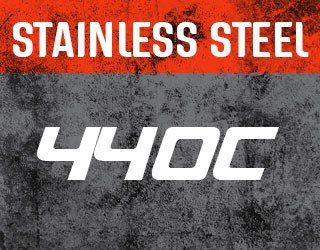
This is an upper mid-range steel widely used by manufacturers for producing generic pocket knives. The 440C was considered high-end steel in the US even till a few years ago but became overshadowed as newer and better types of steel started to enter the market.
In budget knives, the 440C provides decent hardness and toughness and also some corrosion resistance. But its most useful property is stain resistant. It holds an edge relatively well, but the corrosion resistance is not as well as that of other affordable types of steel.
#8 8CR13MOV
| FACTORS | RATING |
|---|---|
| Price: | (3/5) |
| Ease of Sharpening: | (4/5) |
| Corrosion Resistance: : | (1.5/5) |
| Edge Retention: | (1.5/5) |
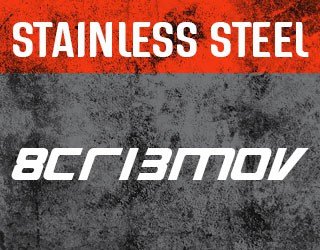
China is not far behind when it comes to manufacturing Steel. The 8Cr13MoV maybe an upper mid-range steel but it is highly affordable and can be made versatile with the help of heat treatments.
The name of the steel combines the three elements in it: chromium-molybdenum and vanadium. But the carbon content in this steel is slightly higher than the chromium content. That is why even though it’s hard and tough it’s not that great at corrosion resistance. Renowned manufacturers like Spyderco are known to produce good knives using 8Cr13MoV steel.
#9 ATS34
| FACTORS | RATING |
|---|---|
| Price: | (2/5) |
| Ease of Sharpening: | (2.5/5) |
| Corrosion Resistance: : | (3/5) |
| Edge Retention: | (3/5) |
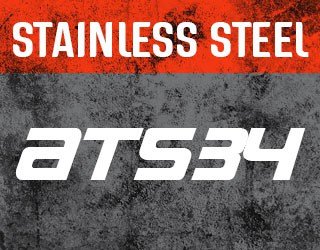
Produced by Hitachi, this is a Japanese steel with very similar properties to that of the 154CM. ATS34 has both molybdenum and chromium resulting in hardness sharpness and edge retention. But because the chromium content is a little low it is not exceptionally resistant to rust. The spice that the ATS34 has become a popular steel among nice makers around the world.
#10 AUS-6
| FACTORS | RATING |
|---|---|
| Price: | (5/5) |
| Ease of Sharpening: | (4.5/5) |
| Corrosion Resistance: : | (2.5/5) |
| Edge Retention: | (1.5/5) |
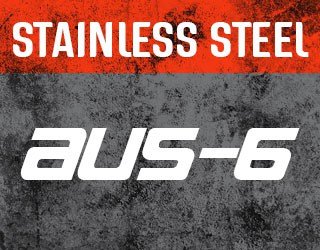
This is another Japanese steel with a low carbon content. AUS-6 was designed as cutlery Steel, the reason why it is so affordable and low quality. It is quoted images to the 440A steel.
Although it has high wear and corrosion resistance, it does not hold an edge well. This is why it’s mostly used for knives that do not need great edge retention. It is mostly used to manufacture very cheap stainless steel knives.
#11 AUS-8
| FACTORS | RATING |
|---|---|
| Price: | (5/5) |
| Ease of Sharpening: | (4/5) |
| Corrosion Resistance: : | (2/5) |
| Edge Retention: | (1.5/5) |
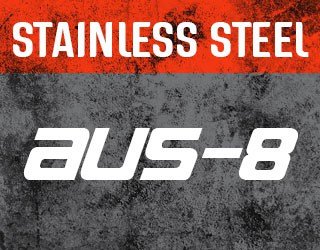
In the same class as the AUS-6, the AUS-8 is comparable to the 440B, which has better corrosion resistance but is softer and does not hold an edge well. This is because of the low carbon content in the steel. The higher the carbon content in any steel, the harder it is and better its ability to hold an edge. This is another budget steel used by manufacturers to produce cheap knives.
#12 CPM154
| FACTORS | RATING |
|---|---|
| Price: | (2/5) |
| Ease of Sharpening: | (2.5/5) |
| Corrosion Resistance: : | (3/5) |
| Edge Retention: | (4/5) |
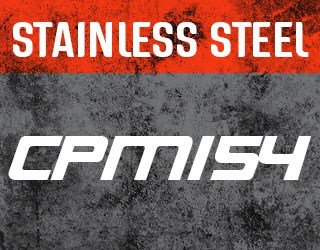
This is a different version of the 154CM, and is considered a super steel. It may not be very popular but is widely used by manufacturers around the world to produce superior knives. The CPM 154 Steel is of superior quality with excellent edge retention, hardness, and corrosion resistance.
CPM 154 allows for thin and sharp blades that can take an edge without breaking or chipping. Some excellent cutting knives are made from the steel because of its sharpness. The CPM 154 is one of those few steels that can be given a mirror finish.
#13 CPM S30V
| FACTORS | RATING |
|---|---|
| Price: | (2/5) |
| Ease of Sharpening: | (3/5) |
| Corrosion Resistance: : | (3.5/5) |
| Edge Retention: | (3.5/5) |
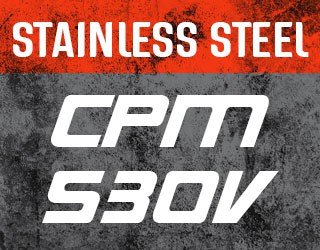
Simply referred to as S30V, this is regarded as one of the finest steel and is widely used by manufacturers to produce some of the most superior knives and tools.
It has excellent edge retention and rust resistance and is used to make premium pocket knives and high and cutlery. Because the S30V has a high amount of carbides in it boasts of extreme hardness and also great durability.
#14 CPM S35VN
| FACTORS | RATING |
|---|---|
| Price: | (2/5) |
| Ease of Sharpening: | (2.5/5) |
| Corrosion Resistance: : | (3.5/5) |
| Edge Retention: | (3.5/5) |
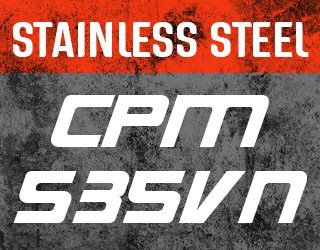
This is a more attractive cousin of the S30V, and has gained popularity because it is easy to work with. There is not much difference between this and the S30V, accepts the presence of niobium in the former.
The combination of vanadium and niobium results in the name S35VN. This still has extreme hardness and durability, along with ease of sharpening and edge retention. Of late the S35VN has found favor among various knife manufacturers.
#15 CPM S90V
| FACTORS | RATING |
|---|---|
| Price: | (2/5) |
| Ease of Sharpening: | (0.5/5) |
| Corrosion Resistance: : | (2.5/5) |
| Edge Retention: | (4.5/5) |
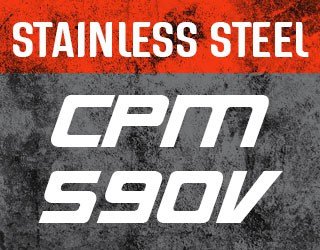
If you want a knife that resists corrosion and holds an edge like no other, the look for a blade made with the S90v steel. This is the king of all premium steels, thanks to the presence of three times more vanadium than found in any other Steel.
Yes, that makes this steel incredibly expensive but if you can lay your hands on a knife made from this steel, you will not prefer to use anything else again. Excellent edge retention incredible hardness and durability and corrosion resistance are some of the defining features of this steel. However, it takes a lot of time and patience to sharpen.
#16 CTS BD1
| FACTORS | RATING |
|---|---|
| Price: | (3/5) |
| Ease of Sharpening: | (3/5) |
| Corrosion Resistance: : | (3/5) |
| Edge Retention: | (2/5) |
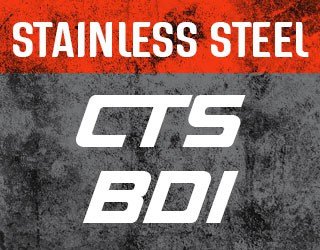
This is a new and unique type of steel that has gained popularity because it is melted in a vacuum. Also called Carpenter Steel, leading knife maker Spyderco is at present experimenting with it and has even made a few knives with it. BD1 has carbon, Chromium, Manganese, and Vanadium.
#17 CTS XHP
| FACTORS | RATING |
|---|---|
| Price: | (3/5) |
| Ease of Sharpening: | (3/5) |
| Corrosion Resistance: : | (3/5) |
| Edge Retention: | (2/5) |
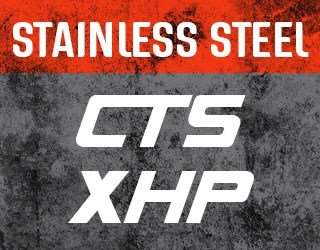
Knife makers and knife enthusiasts regard the XHP Carpenter Steel because it is high in carbon and chromium and both of extreme hardness and edge retention.
The XHP has been praised by several leading knife experts because of its amazing corrosion resistant properties. Like the BD1 the XHP is also fairly new and companies are still experimenting with it.
#18 D2
| FACTORS | RATING |
|---|---|
| Price: | (2/5) |
| Ease of Sharpening: | (1.5/5) |
| Corrosion Resistance: : | (2.5/5) |
| Edge Retention: | (2/5) |
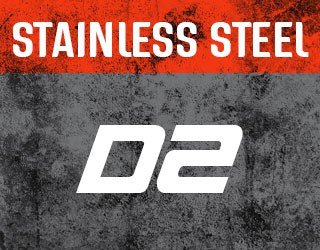
Because it has less than 13 percent of chromium in it, D2 is considered semi stainless or tool steel. Nevertheless it has decent corrosion resistant properties, is much harder and better at holding an edge for a long time.
However the only downside of this steel is that its incredibly difficult to sharpen. For the ordinary user it is almost impossible to get a fine edge. Only master sharpeners can make this steel razor-sharp.
#20 ELMAX
| FACTORS | RATING |
|---|---|
| Price: | (3/5) |
| Ease of Sharpening: | (1.5/5) |
| Corrosion Resistance: : | (1/5) |
| Edge Retention: | (4/5) |
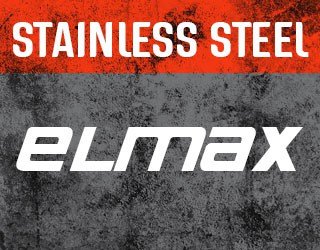
If you want an ultra-premium blade Steel with a fine balance of sharpness Edge retention and corrosion resistance, then Elmax is the one.
This European Steel has been considered the all-rounder blade Steel because it offers almost all the qualities desired in a knife blade. It has gained a lot of popularity in the market and it’s giving Crucible stiff competition. Elmax is actually a powdered alloy of chromium, molybdenum, and vanadium.
#21 H1
| FACTORS | RATING |
|---|---|
| Price: | (3.5/5) |
| Ease of Sharpening: | (4/5) |
| Corrosion Resistance: : | (4.5/5) |
| Edge Retention: | (1/5) |
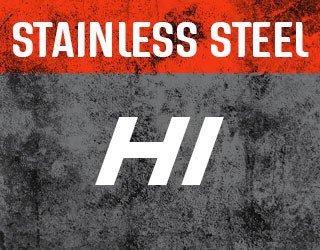
This is one of those types of Steel that does not rust under any circumstance. As a result, H1 is the ideal Steel for diving knives. It has decent hardness and is also easy to sharp but it has zero edge retention. This is the reason why H1 is used for making knives that do not require a sharp edge. If you saw the last The Force Awakens or Jurassic World, they did not require creativity of a plot but this is another topic!
#22 M390
| FACTORS | RATING |
|---|---|
| Price: | (3/5) |
| Ease of Sharpening: | (1/5) |
| Corrosion Resistance: : | (3.5/5) |
| Edge Retention: | (4.5/5) |
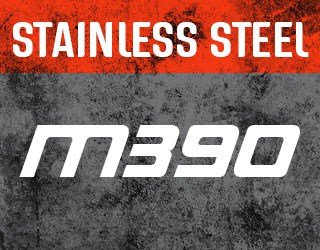
One of the newer and most premium steels, M390 is known for its excellent corrosion resistance and extreme hardness and wear resistance. It is made by adding chromium, molybdenum, vanadium, and tungsten to steel. Corrosion and wear resistance are its defining properties.
#23 N690
| FACTORS | RATING |
|---|---|
| Price: | (2/5) |
| Ease of Sharpening: | (2/5) |
| Corrosion Resistance: : | (4/5) |
| Edge Retention: | (3/5) |
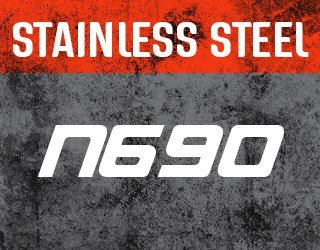
This Austrian steel made by adding Cobalt to the steel and is used for producing sharp knives and tools. Surgical instruments are also often made with this steel. It has good corrosion resistance and also holds an edge very well.
#24 VG10
| FACTORS | RATING |
|---|---|
| Price: | (3/5) |
| Ease of Sharpening: | (3/5) |
| Corrosion Resistance: : | (3.5/5) |
| Edge Retention: | (3/5) |
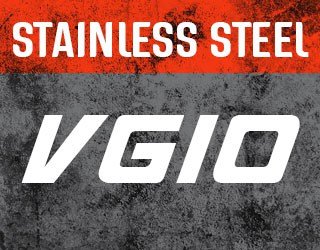
This Japanese Steel has become very popular in the American market thanks to manufacturers like Spyderco that use this Steel for a variety of their EDC knives. Because of the chromium content it has excellent corrosion resistance while the Vanadium makes it hard and easy to sharpen. No matter how much you sharpen this steel, still it keeps getting sharper without chipping or breaking.
#25 X15TN
| FACTORS | RATING |
|---|---|
| Price: | (3/5) |
| Ease of Sharpening: | (2/5) |
| Corrosion Resistance: : | (4.5/5) |
| Edge Retention: | (2/5) |
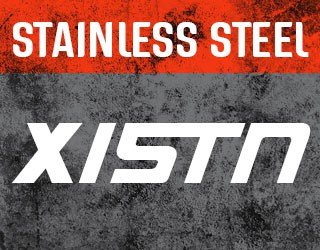
This is one of those types of stainless steel that is known for its corrosion resistant properties. Whether you use it in water or in places with high humidity, or expose it to acidic chemicals, X15TN will remain undamaged.
This is one of the most important reasons why it is so popular among knife makers. Several leading companies regularly use this steel to produce high-quality knives, including Spyderco. Because of its incredible corrosion resistance, it is used for underwater, fishing, and swamp knives. That enjoyable show Deadliest Catch – those crap fisherman would love a knife such as this. They probably already have one!
#26 ZDP-189
| FACTORS | RATING |
|---|---|
| Price: | (4/5) |
| Ease of Sharpening: | (0.5/5) |
| Corrosion Resistance: : | (2/5) |
| Edge Retention: | (4/5) |
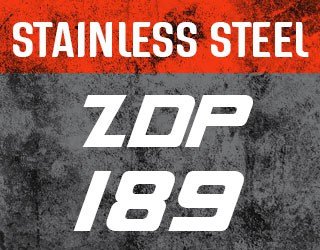
Although this is a newer steel type, it has already become popular because of its high corrosion resistance, toughness and wear resistance. Because of its high chromium and carbon content, it is an expensive steel to manufacture but it does make excellent knives.
Those who have used ZDP-189 steel knives are always in praise of it, because of its toughness, hardness, and edge retention. You’ll forget the last time the knife needed sharpening by the next time it does.
POPULAR HIGH CARBON STEEL TYPES
#1 1075
| FACTORS | RATING |
|---|---|
| Price: | (5/5) |
| Ease of Sharpening: | (3.5/5) |
| Corrosion Resistance: : | (1/5) |
| Edge Retention: | (1.5/5) |
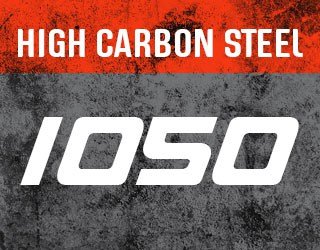
This is a high Carbon Steel made by blending in manganese and carbon to iron. The reason why this steel has become so popular is its affordability, hygienic qualities and excellent corrosion and wear resistance.
It is easy to melt and mold, which is why it is widely used for making not only knives but also automobiles. 1050 is basically a tool steel that remains and damaged even when exposed to high heat. This is why it is easy to mold and weld this steel by heat treating it.
#2 1075
| FACTORS | RATING |
|---|---|
| Price: | (4/5) |
| Ease of Sharpening: | (2.5/5) |
| Corrosion Resistance: : | (1/5) |
| Edge Retention: | (2/5) |
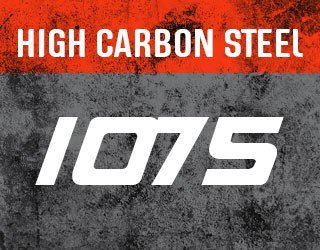
This is another high carbon tool Steel used for making larger knives and swords. Not only is it tough and durable but also hypo-eutectic, which means it has a carbon content of less than 0.8 percent. Because of the high carbon content, the Steel is definitely harder but also more brittle than other types of Steel with a lower carbon content.
This means knives made with 1075 steel should be handled with care and not put to rough use because the blade could break or crack.
#3 5150
| FACTORS | RATING |
|---|---|
| Price: | (5/5) |
| Ease of Sharpening: | (4/5) |
| Corrosion Resistance: : | (1/5) |
| Edge Retention: | (1/5) |
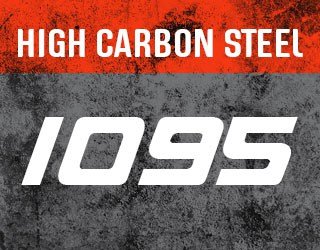
This is most popular of the 10-series carbon steel, with low corrosion resistance and decent edge retention properties. The defining property of this steel is the toughness. This is why it’s used to make larger knives, swords, band tools, because it’s resistant to chipping and cracking, easy to sharpen, takes a sharp edge and is also affordable.
#4 5150
| FACTORS | RATING |
|---|---|
| Price: | (3/5) |
| Ease of Sharpening: | (3.5/5) |
| Corrosion Resistance: : | (1/5) |
| Edge Retention: | (1.5/5) |
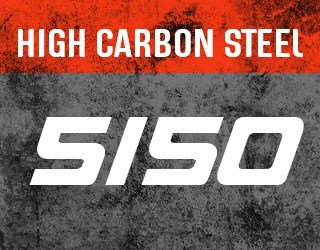
This is a medium carbon steel that is used to produce axes and tomahawks because it is tough and hard and impact resistant. Because it has chromium in it 5150 steel is also corrosion resistant to a great extent. Throwing knives and axes are usually made with this steel because it is extremely durable.
#5 CARBON V
| FACTORS | RATING |
|---|---|
| Price: | (4/5) |
| Ease of Sharpening: | (2/5) |
| Corrosion Resistance: : | (3/5) |
| Edge Retention: | (1/5) |
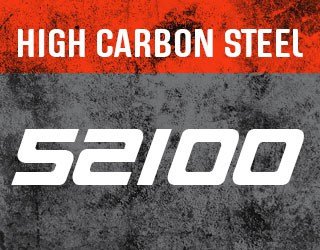
This is a superior excellent high carbon steel, originally developed making industrial and aircraft bearings because of its excellent strength and wear resistance. 52100 steel is also used to produce knives and swords because it can be welded with other types of steel.
Which type of steel has excellent fatigue and corrosion resistance because of the chromium present in it.
#6 CARBON V
| FACTORS | RATING |
|---|---|
| Price: | (2/5) |
| Ease of Sharpening: | (3.5/5) |
| Corrosion Resistance: : | (2/5) |
| Edge Retention: | (3/5) |
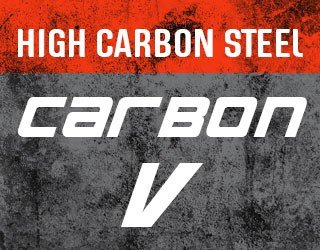
Carbon V is a chromium vanadium steel that goes by the name of CV series. It was first developed in the 1950’s by Sharon Steel, and later adopted by several other companies and given different names.
It is considered a superior version of the 1095. This high carbon steel takes a very good edge, is easy to sharpen, and has rust resistance properties because of the chromium and vanadium. It is also pretty hard and durable. Bruce Wayne would like this knife for Batman!
#7 CPM 3V
| FACTORS | RATING |
|---|---|
| Price: | (3/5) |
| Ease of Sharpening: | (4/5) |
| Corrosion Resistance: : | (1/5) |
| Edge Retention: | (3/5) |
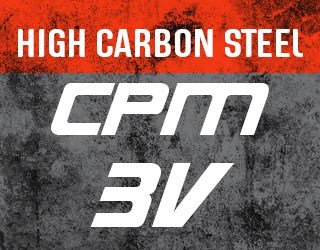
There are several advantages when CPM 3V steel is used in a knife. The most important benefit is the extreme toughness. No matter what you put it through, it is unlikely to break or crack or wear out. Because of its durability 3V steel is mostly used for those knives that will be put to rough use.
However, 3V steel is not rust resistant. It is not stainless steel, and if not cared for, will oxidize over time. But this doesn’t stop this steel from being one of the best types there is today. Unless the knife has to come into contact with water, 3V is widely used to produce high quality knives.
#8 CPM M4
| FACTORS | RATING |
|---|---|
| Price: | (3.5/5) |
| Ease of Sharpening: | (4/5) |
| Corrosion Resistance: : | (1/5) |
| Edge Retention: | (4.5/5) |
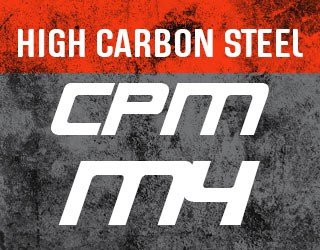
This is another high-speed steel used for making high-end knives. CPM M4 has good edge retention, ease of sharpening, toughness, and strength. It gets super sharp easily, and resists deformation and breaking for the longest time. Because it is so hard and tough, it is used for high-end EDC and folding knives.
Once you sharpen it, the edge is retained for a long time without needing frequent sharpening. It only falters at rust resistance, but if you properly care for the knife, it stays free from corrosion for a long time.
#9 INFI
| FACTORS | RATING |
|---|---|
| Price: | (3/5) |
| Ease of Sharpening: | (4/5) |
| Corrosion Resistance: : | (2.5/5) |
| Edge Retention: | (3/5) |
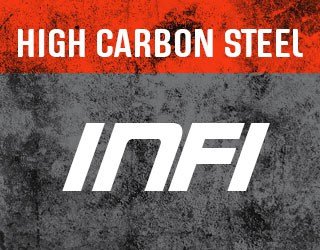
This is a nitrogen steel, with properties similar to CPM 3V. This is supposed to be one crazy tough steel because of the nitrogen added. When knives or swords are made from this steel, they can even cut through bricks and steel pipes.
It is a proprietary steel used only by Busse, and although not entirely stainless, it does have decent corrosion resistance. You can put this steel through any kind of abuse but it will never chip.
#10 M2
| FACTORS | RATING |
|---|---|
| Price: | (4/5) |
| Ease of Sharpening: | (4/5) |
| Corrosion Resistance: : | (2.5/5) |
| Edge Retention: | (4.5/5) |
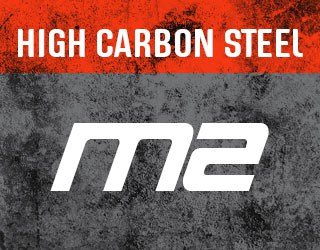
Another high-speed tool steel, M2 is a Molybdenum steel that is tough, wear-resistant, with hot hardness. Not only is it inexpensive, but it also has incredible edge retention and ease of sharpening.
M2 used to be a very popular blade steel even until a few years ago but has been overshadowed by other better steel types. M2 remains a good choice for high-end and limited edition production knives.
#11 O1
| FACTORS | RATING |
|---|---|
| Price: | (2/5) |
| Ease of Sharpening: | (3/5) |
| Corrosion Resistance: : | (1/5) |
| Edge Retention: | (2.5/5) |
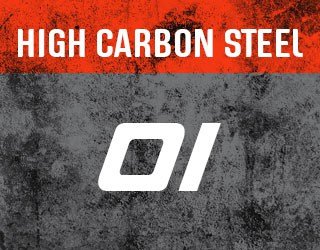
This is a low alloy steel with as many as eight additives, including carbon, manganese, and silicon.
It is a very rugged steel, and responds well to heat treatment. It has good edge retention and wear resistance, but is low on rust resistance because of the low chromium content. But if cared for well, M2 outperforms several other high-end steel.
#12 S7
| FACTORS | RATING |
|---|---|
| Price: | (4.5/5) |
| Ease of Sharpening: | (4/5) |
| Corrosion Resistance: : | (1.5/5) |
| Edge Retention: | (1/5) |
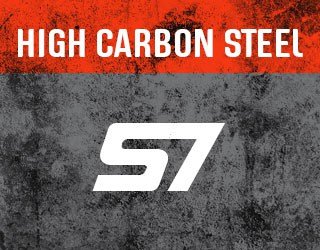
This tool steel is pretty standard, does not rust easily, has a high grindability, and has decent edge resistance. It is unlikely to chip or crack even under the toughest conditions. However, the S7 steel doesn’t have good wear resistance, and will likely lose its edge over time. it does not respond well to heat treatments because it is air hardening.
#13 BLUE STEEL
| FACTORS | RATING |
|---|---|
| Price: | (4/5) |
| Ease of Sharpening: | (4.5/5) |
| Corrosion Resistance: : | (3.5/5) |
| Edge Retention: | (4/5) |
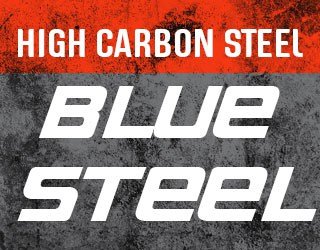
This is a Japanese high carbon steel, widely used for knife making. Because of the high carbon content, it is not only hard and tough but also delivers extreme sharpness. We may have seen this in the awesome movie The Last Samurai.
It also contains chromium and tungsten, making this steel not only rust resistant to a great extent but also capable of responding to heat without getting damaged. Blue Steel is used for making all types of knives, including EDC, tactical, and kitchen knives.
#14 W1
| FACTORS | RATING |
|---|---|
| Price: | (4/5) |
| Ease of Sharpening: | (4/5) |
| Corrosion Resistance: : | (2/5) |
| Edge Retention: | (4.5/5) |
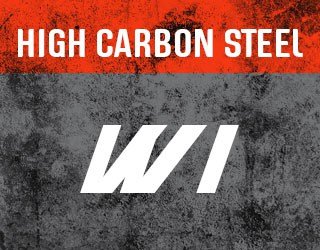
This is a favorite with both beginners and seasoned knife makers because of its water hardening and edge holding properties. It is easily available and should be quenched in water to harden after heating. Its toughness depends upon the heat treatment that it gets.
AMAZING KNIVES
Given all these different types of steel, it is no doubt a difficult task to choose a knife. It must be noted that all of these types of steel have some advantages and disadvantages.
While some are great at holding an edge and resisting corrosion, others are better at taking abuse. However, the choice of knife should not depend on the steel alone. Aside from the material, the blade geometry should also be considered.
When the right blade geometry combines with the right type of steel, it produces an incredible knife. Remember to choose a knife that is best suited for your purpose. Don’t buy a low corrosion resistant knife for a fisherman or a diving knife to someone who camps a lot. Would you buy a violin to someone who plays the piano?!

